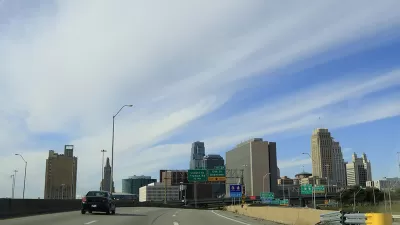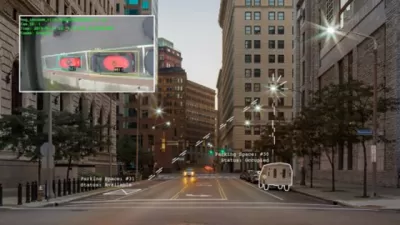Technology is infiltrating every aspect of our lives, but, according to this article, we shouldn't underestimate the nefarious role it plays in urban spaces.

"The 'smart city' is not a coherent concept, let alone an actually existing entity. It’s better understood as a misleading euphemism for a corporately controlled urban future," argues Jathan Sadowski. The grand visions of the connected city are part of a narrative created by corporate interests to convince planners, city officials, and the public that the challenges facing cities can be solved through the adoption of omnipresent technological systems.
But the smart city is really the captured city, says Sadowski, where collection of data and surveillance of physical space are prevalent. Urban policing is one example of how the private sector runs the show from behind the scenes:
The most powerful upgrades to urban surveillance used to come primarily from the Departments of Defense and Homeland Security, but today, corporations like Amazon roll out systems that the FBI and CIA would have literally killed to install. (Now they can just pay a monthly fee for access.) Amazon’s networked doorbell camera Ring and its associated Neighbors app are an example.
Sadowski believes some people will creatively resist the totalitarianism of social and technological infrastructure of the captured city, but a meaningful resistance will need go further. "It will require us to target with ruthless criticism the producers and users of surveillance systems, the supply and demand for urban control. It will require us to know our enemies and name them as such."
FULL STORY: The Captured City

Alabama: Trump Terminates Settlements for Black Communities Harmed By Raw Sewage
Trump deemed the landmark civil rights agreement “illegal DEI and environmental justice policy.”

Study: Maui’s Plan to Convert Vacation Rentals to Long-Term Housing Could Cause Nearly $1 Billion Economic Loss
The plan would reduce visitor accommodation by 25% resulting in 1,900 jobs lost.

Why Should We Subsidize Public Transportation?
Many public transit agencies face financial stress due to rising costs, declining fare revenue, and declining subsidies. Transit advocates must provide a strong business case for increasing public transit funding.

Wind Energy on the Rise Despite Federal Policy Reversal
The Trump administration is revoking federal support for renewable energy, but demand for new projects continues unabated.

Passengers Flock to Caltrain After Electrification
The new electric trains are running faster and more reliably, leading to strong ridership growth on the Bay Area rail system.

Texas Churches Rally Behind ‘Yes in God’s Back Yard’ Legislation
Religious leaders want the state to reduce zoning regulations to streamline leasing church-owned land to housing developers.
Urban Design for Planners 1: Software Tools
This six-course series explores essential urban design concepts using open source software and equips planners with the tools they need to participate fully in the urban design process.
Planning for Universal Design
Learn the tools for implementing Universal Design in planning regulations.
Caltrans
Smith Gee Studio
Institute for Housing and Urban Development Studies (IHS)
City of Grandview
Harvard GSD Executive Education
Toledo-Lucas County Plan Commissions
Salt Lake City
NYU Wagner Graduate School of Public Service




























